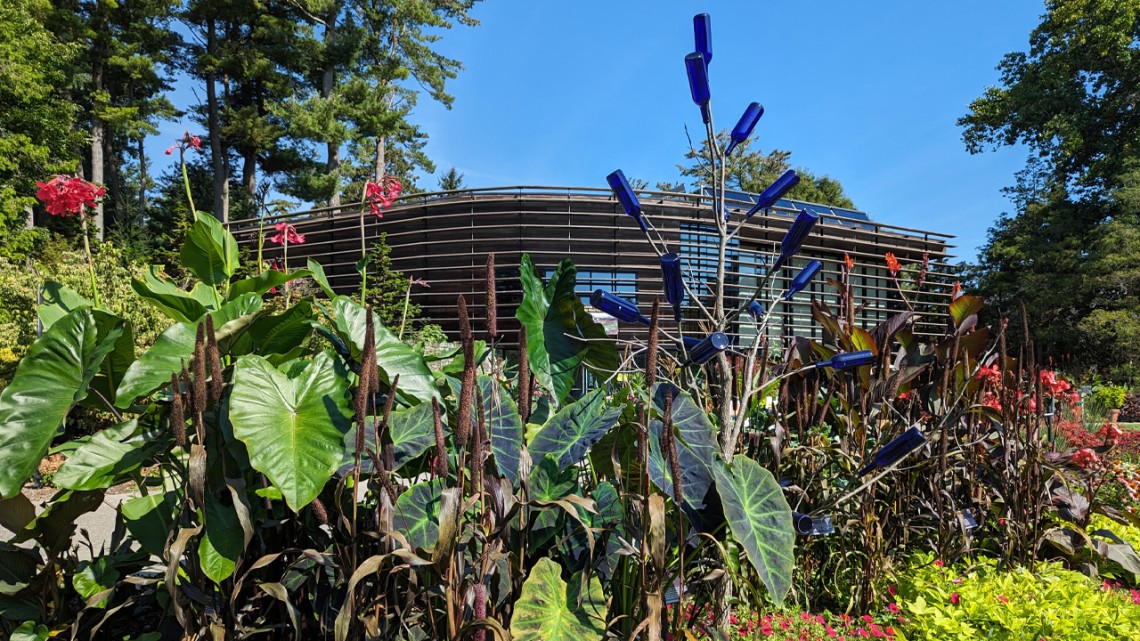
A traditional bottle tree, often found in home gardens in the Southern U.S., welcomes visitors to explore plants brought to the Americas by enslaved Africans.
News directly from Cornell's colleges and centers
Art, stories, and tours celebrate plants and the Black experience
By Sarah Fiorello
Cornell Botanic Gardens’ exhibition “Seeds of Survival and Celebration: Plants and the Black Experience” honors the skill, knowledge, and resilience of enslaved Africans and their descendants in the Americas with garden installations featuring more than 70 plants of significance to Black culture. New to the exhibition in its third and final year: an expanded audio tour, a gallery of photographs of traditional African American gardens, and plants that highlight the life and accomplishments of George Washington Carver.
Through plants, art, objects, and information that expands our knowledge, the exhibition shows how enslaved Africans and their descendants continued their cultural traditions under the duress of being kidnapped and enslaved. Plants that came with them on slave ships and new ones available to them in the Americas were grown in gardens around their living quarters to continue culinary traditions and healing practices.
Kofi Acree, director for the John Henrik Clarke Africana Library and curator of Africana Collections for the Division of Rare and Manuscript Collections, is one of a group of Cornell staff, faculty, and students who co-created the exhibition.
“This exhibition works to shift the image that often comes to mind when envisioning enslaved people from one of helpless individuals, to ones with incredible strength and agency to continue their cultural traditions and create new ones under the challenges they faced,” Acree said.
Media Contact
Get Cornell news delivered right to your inbox.
Subscribe
